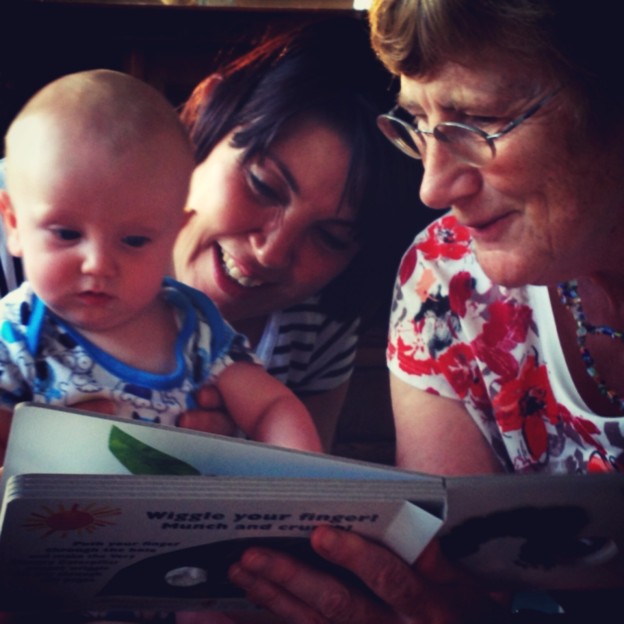One of the joys of having a young baby, I’m finding, is reading. I wasn’t expecting reading to come to us so early, it was my mum who suggested it when Rufus was only three or four months old. He loves us reading to him; the shapes, the colours, the closeness, the sound of our voices, the turning of pages, the taste of the corner of each page as he takes a pensive suckle before it
goes past. I’ve recently started to wonder if I can make stories up for him. I remember at OFFF in Lisbon, Joshua Davis was talking about creativity and how he made up stories to order for his daughter every bedtime. I’d like to give it a go, and I thought
writing about it would give me a chance to think it through and some motivation to continue.
It’s scary, as any author or creator will tell you, at the start of a made up story. At the start of a made up bedtime story, you’ve not got a blank sheet of paper, you’ve got a yawning chasm
of time and the expectant and ready to be bored face of a child. So I think I need to work out some initial structures and rules to work within, at least while I start out. Here’s what I’m thinking…
Rufus has toys, so they should be in the stories. I figure this is probably how Winnie the Pooh might have started out. I think the child should be the wise, strong one, and the toy characters are loyal, possibly
bumbling and good hearted companions. Toys can have characteristics which assist the child character, and grant them powers, for example Baba Ghanoush the elephant (Rufus’ elephant is called Baba Ghanoush, Baba Ghanoush’s theme song is his name repeated to the tune of the Addams Family) gives the child the ability to ride up high and reach with his trunk, the monkey allows him to scamper through the trees. The animals can also give plot momentum by precipitating events, with the monkey getting into mischievous trouble &c. I’ve also come back across the “fortunately,
unfortunately” story structure, which I remember from creative writing exercises at school. Fortunately/Unfortunately is a great device for introducing plot impetus, so “…fortunately Rufus and Baba Ghanoush landed in the river with a mighty splash, unfortunately they were swept into a deep dark tunnel, and carried deep underground, fortunately Baba Ghanoush lifted Rufus onto his
back with his trunk and paddled happily along while Rufus gazed around at the dripping tunnel walls, unfortunately there was…”. I love the “best beloved” repetitions in Kipling’s Just So Stories, and the general dum-de-dum patter of the composition. I’m on the lookout for more devices and springboards, rhythms and structures, let me know if you have any.


Leave a Reply